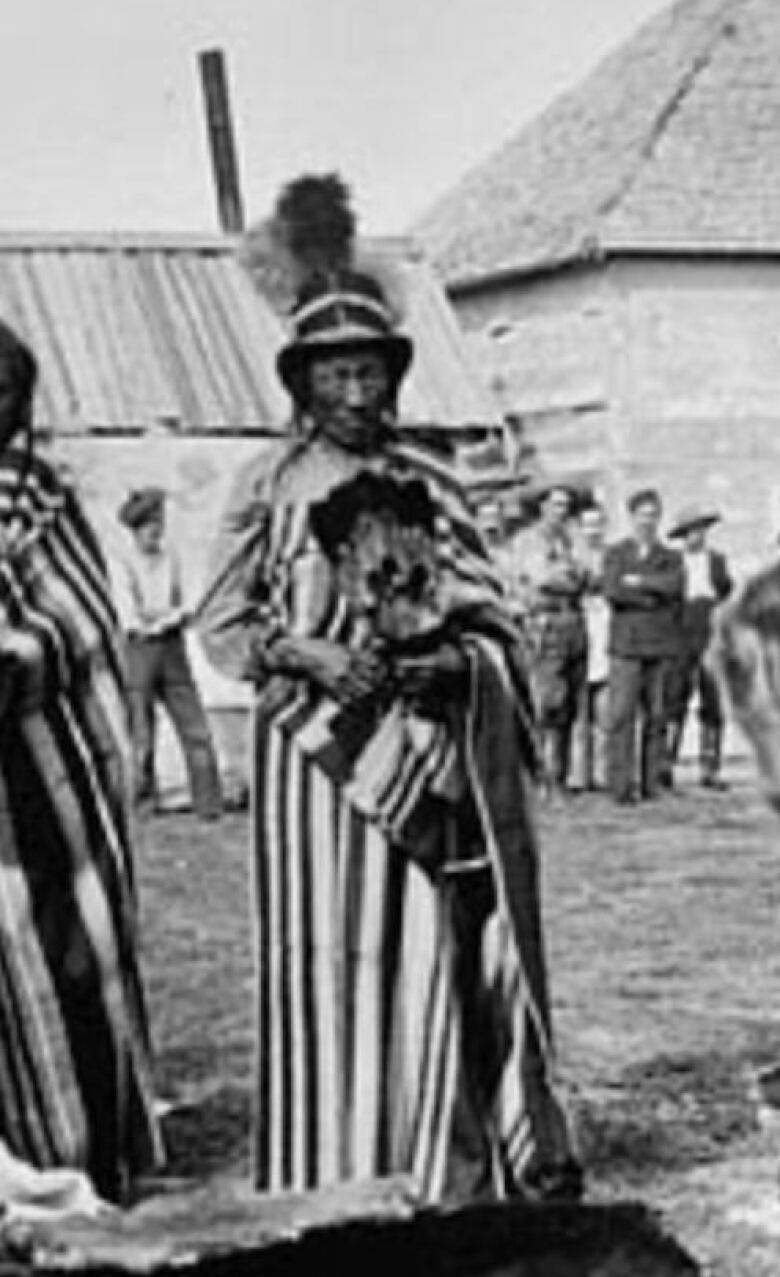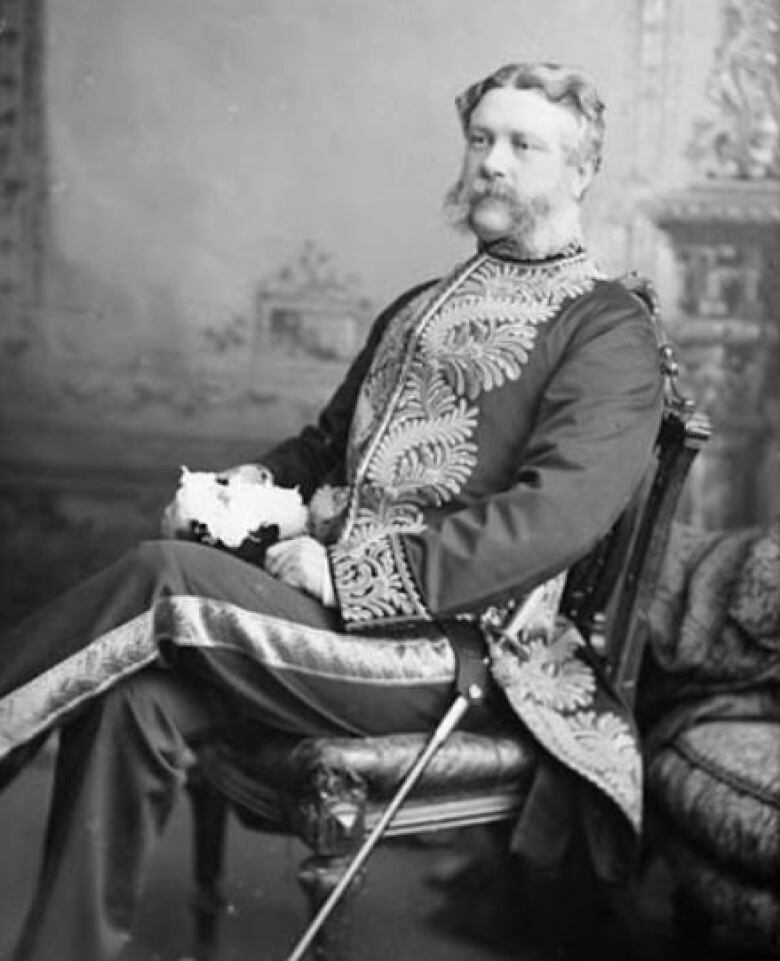Regina's Dewdney Avenue is a constant reminder of the mass killing of Indigenous people
Dewdney was responsible for quelling dissent among the chiefs

This Opinion piece was written by Robert Innes, a member of Cowessess First Nation located in Treaty 4 who, as of July, will be an associate professor in the department of political science and the Indigenous studies program at McMaster University.
For more information aboutCBC's Opinion section, please see theFAQ.
Dewdney Avenue runs eastwest through the entire length of Regina. It goes past the RCMP Academy in the west end, skirts the iconic new Mosaic Stadium and passes the downtown CPR tracks the same ones that brought great wealth to the city, the province and the street's namesake.
The street also runs through North Central, a neighbourhood that contains a large population of First Nations and Mtis people, many of whom may not know that Edgar Dewdney played a significant role in the deaths of their ancestors.
There has been a lot of talk about residential schools since the discovery of the remains of 215 children at the Kamloops Residential School. The TRC's Calls to Action called what happened at residential schools cultural genocide. Though the TRC provides enough to demonstrate the residential school system was genocide, it could not legally call it genocide without attaching the word "cultural," as David MacDonald makes clear in his book Sleeping Giant Awakens: Genocide, Residential Schools, and the Challenge of Conciliation.
For some, labelling residential schools cultural genocide does not go far enough, as it disregards the many children that died. For others, cultural genocide is a palatable term, because for them this is not 'real' genocide. For both, genocide means the mass killing of people.
However, the word genocide denotes the wholesale destruction of a people.
These conversations about residential schools are important. However, since there has been less discussion of the mass murder of Indigenous people in Canada, there is a subtle message that this mass killing did not occur.
It did.
In the early 1880s, many bands of the Iron Alliance (Nehiyaw, Anishinaabe, Nakoda and Mtis), as many as 16,000 people, had gathered at the Cypress Hills to follow the buffalo into Montana, as the herds had disappeared from the northern plains. Starvation was rampant. Many people had died or were on the verge of dying.

This large gathering provided chiefs like Big Bear, Piapot and others the opportunity to garner support for revising the treaties. They found a receptive audience in many chiefs who were unsatisfied with how the treaties had been implemented.
Edgar Dewdney was the Commissioner of Indian Affairs and Lieutenant Governor of the North-West Territories, which at that time included much of what are now Canada's Prairie provinces. Dewdney was responsible for quelling the dissent among the chiefs. He used food to do it.
Dewdney promised Indigenous people that Fort Walsh, the North-West Mounted Police (NWMP) fort in the Cypress Hills, would distribute food. But in 1881, Dewdney modified this policy to only provide food to those who had accepted a treaty.
To weaken the dissenting chiefs' position, he decided that the government would recognize any adult male who was able to garner a following of 100 people as a chief. Dewdney also stated that bands whose chiefs had selected reserves in other regions would not receive their annuities until they had returned to those reserves.
In late 1881, people returned to Cypress Hills from buffalo hunts to discover they could not obtain rations. The NWMP was forced to hand out rations in what has been called a near-riot situation. This made Dewdney realize that the number of people in the region made it impossible for him to gain control.
Dewdney also knew a large contingent of Indigenous people just south of the proposed CPR line could scare potential settlers from making the trek west. He decided a new strategy was needed.

His new plan was to close Fort Walsh. In other words, he implemented a starvation policy to force First Nations and Mtis people out of the area and make them walk hundreds of kilometres to either the Battleford or Qu'Appelle regions.
No one knows how many Indigenous people died because of Dewdney's policies. Historians agree that the death toll was high.
During its Treaty Land Entitlement negotiations, Cowessess First Nation determined 330 of its 1,000 band members died from Dewdney's policies. If the death rate was the same for the other bands, there may have been more than 5,000 deaths. To put that into context, 4,000 Cherokee died on the Trail of Tears. Yet, so few people know about the deaths at Cypress Hills and certainly no one acknowledges it as genocide.
In 1882, Dewdney located the new territorial capitol from Battleford to Regina. A street is named after him to commemorate his contribution to the city and the province.
For those who know the history, driving down Dewdney Avenue in Regina is a continual reminder that in Saskatchewan and Canada more broadly, Edgar Dewdney's role in building that city is considered more important than his role in the mass killing of First Nations and Mtis people.
Interested in writing for us? We accept pitches for Opinion and First Person pieces from Saskatchewan residents who want to share their thoughts on the news of the day, issues affecting their community or who have a compelling personal story to share. No need to be a professional writer!
Read more about what we're looking for here, then emailsask-opinion-grp@cbc.cawith your idea.
Corrections
- A previous version of this story stated that Dewdney moved the capital to Regina from North Battleford. In fact, it was from Battleford.Jun 17, 2021 2:27 PM CT












_(720p).jpg)


 OFFICIAL HD MUSIC VIDEO.jpg)
.jpg)



























































































